Acorn Jelly is a yummy low-calorie Korean side dish that’s full of earthy flavor. Made from acorn powder, Dotorimuk has a smooth and soft jello-like texture that just melts in your mouth while the spicy seasoning sauce adds a great punch to each mouthful. GF, VG
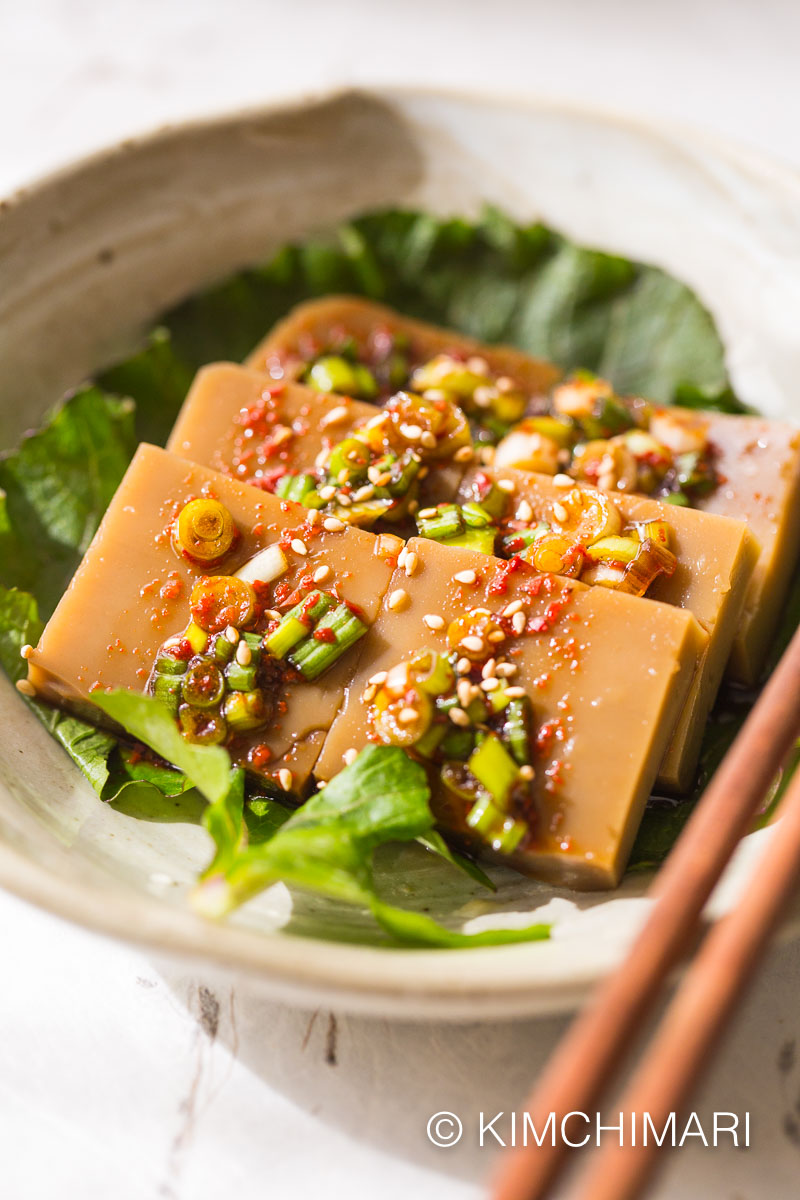
What is Acorn Jelly?
Acorn Jelly (Dotorimuk 도토리묵) is a jelly made from cooking dried acorn powder with water and then letting it cool to become like jello but firmer. Koreans slice this into thick squares and enjoy it drizzled with spicy soy sauce. The flavor of the jelly is quite mild with hints of nutty and earthy flavor with a very slight astringent taste at the end.
This wonderful Dotori (Acorn) Muk (Jelly) is a classic everyday Korean side dish and it is something I kind of re-discovered last winter during my visit to Korea. I have had it so many times at different restaurants or bought it from the stores and have just gotten used to the so-so taste of it. But it was the first time in a long time where I had one that was freshly made at home at my mother-in-law’s.
Just like gochujang, I have almost forgotten how wonderful a freshly homemade muk tastes. And because you are using 100% acorn powder with no fillers like cornstarch, it was just really flavorful and yummy. The texture was a bit softer and creamier too which was a pleasant surprise.
Dotorimuk requires good Chopstick skills!
Acorn jelly is notoriously hard to pick up with your chopsticks – even among Koreans. I remember when I was little, adults would scare the kids by saying that either they learn to use the chopsticks the ‘right’ way and be able to eat things like noodles and muk without difficulty or that they would have to embarrass themselves and resort to using a spoon or maybe a spork (spoon + fork) even as an adult!!! 😵
I remember being so proud of myself the day I learned how to use the chopsticks properly and was able to pick up all the side dishes on my own!! YAY ME!! I felt like a total grown-up!!! Now, even if you can use chopsticks, if you use it the ‘wrong’ way (by just pinching things together, using it more like a tweezer than chopsticks) then you are totally doomed in picking up things like the slippery little suckers like muk.
And you know..there will always be a smart XXX at the table, who will tell you, that it’s because you are not using the chopsticks the ‘right’ way. I mean, no one would bother me because I used it the right way but I always felt bad for my friends or other adults who were using chopsticks differently and always got chastised for it.
BTW, if you want to see what the ‘right’ way is, you can learn it here.
Well, long gone are those days. No one really cares anymore whether you know how to use it the right way or not, whether you write with your left hand or the right hand…Korean kids these days, you should be glad if they know how to use the chopsticks at all. Koreans have become a lot more tolerant of things or people outside the “norm” – which is a good thing.
Acorn Jelly Health Benefits
In the traditional Korean medicinal book called Donguibogam (동의보감), Acorn Jelly is known to help with patients who have stomach problems especially with gas and those who go immediately to the bathroom after eating. It is also said that eating this jelly can help with stopping diarrhea in general. And if you read below, I believe this comes from the anti-microbial effect from tannins.
More recent scientific studies found that acorns are high in tannin. Tannins in large amounts can actually have negative effects on your body, you can have stomach problems, vomiting and even liver problems. However, in small amounts, it can have great health benefits –
“Tannins were also reported to have anticarcinogenic activity. The growth of fungi, bacteria, and viruses has been inhibited by tannins. So, tannins can theoretically serve as natural regulators of the microbial population in human gastrointestinal tract”. [Scienc Direct]
“Tannins have also been reported to exert other physiological effects, such as to accelerate blood clotting, reduce blood pressure, decrease the serum lipid level, produce liver necrosis, and modulate immunoresponses. “[NCBI]
But the good thing with the way Koreans eat acorns is that a large amount of tannin is removed in the process of making the powder for Dotorimuk so you will not have any ill effects from it but only the benefits. FYI, tannin is the stuff that gives you a muddy astringent flavor, often an aftertaste from some red wine or black tea. And although acorn itself has a lot of this flavor when it’s made into dotorimuk, very little of this unpleasant taste remains.
How is Dotorimuk Powder made from acorns?
Acorns are collected from the mountains in Korea, soaked in water for 2-3 days, dried for 2-3 days then the shells are removed then ground into powder or you can grind with the shells and all. If there are shells, you want to strain it in water first. Then soak the powder in water and let the powder settle on the bottom. Discard the water on top and collect the sediments, dry the sediments and there you have it!! Acorn powder for your jelly!
Where to buy the Dotorimuk Garu (Acorn powder/starch/flour)?
You can buy them at your Korean grocery stores or online from my Amazon shop HERE. (I’m an Amazon affiliate.) I found that the brand does not matter too much except check if it’s 100% acorn powder or if it has other filler ingredients in it. Best to buy 100% to enjoy the full benefits and flavor.
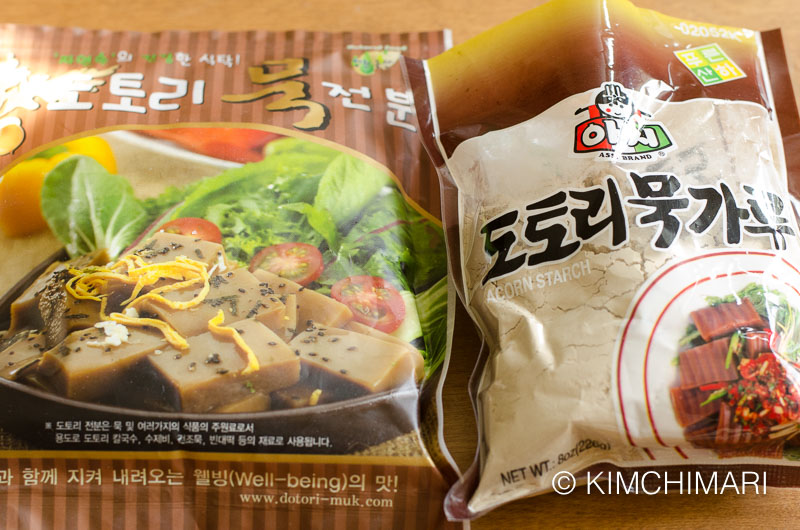
It also goes by Acorn starch (Dotori Jeonbun 도토리전분) in addition to Dotorimuk Garu 도토리묵가루.
Chef’s Tips for Making Acorn Jelly (Dotorimuk)
- Check water: acorn powder ratio from the Dotorimuk powder package that you have. The ratio varies. Just from 3 different packages (actually one is homemade from my mother-in-law’s friend), the ratio ranges from 6:1 to 4.5:1. So it may be a bit of test and see for some of you.
- When cooking, keep watch and keep stirring to avoid lumps and from burning the bottom. It will start to thicken suddenly.
- Cool completely until it’s completely firm (4-5 hrs to overnight) – it should jiggle but firmer than jello. If room temp is too warm, it may be safer to cool in the fridge although it’s not the best way.
- Store leftovers in fridge up to 4 days and can be eaten cold right out of the fridge!
- Variations – the classic way to have Dotorimuk is to slice it and drizzle them with Yangnyeomjang (spicy soy sauce)
- Dotorimuk with Sesame Oil and Salt – this is something I make, doesn’t have a name but the simplest way to enjoy acorn jelly is to toss it in some sesame oil and good sea salt and sesame seeds. It is so nutty and yummy and lets you enjoy the muk all on its own.
- Dotorimuk Muchim 도토리묵무침 – vegetables like lettuce, green onions, onions, carrots, perilla and chrysanthemum leaves are added to jelly and then tossed in spicy sweet tangy sauce – RECIPE below!
- Dotorimukbap 도토리묵 – a warm rice soup dish with rice on the bottom, thin slices of jelly and cucumber, carrots, seasoned kimchi in warm anchovy broth soup (use the full-flavored one).
- Dotorimuksabal 도토리묵사발 – a cold soup dish with thin slices of jelly, cucumber, chopped kimchi. For a quick easy prep, use store-bought Naengmyeon or make my Naengmyeon Broth and use that instead.
- Gluten-free and Vegan – use GF soy sauce and make sure acorn powder is 100% acorns and doesn’t have other fillers with gluten
- Make extra sauce and keep in fridge for other dishes. See my Korean Seasoning (Yangnyeomjang) post to learn about what sauce to use when.
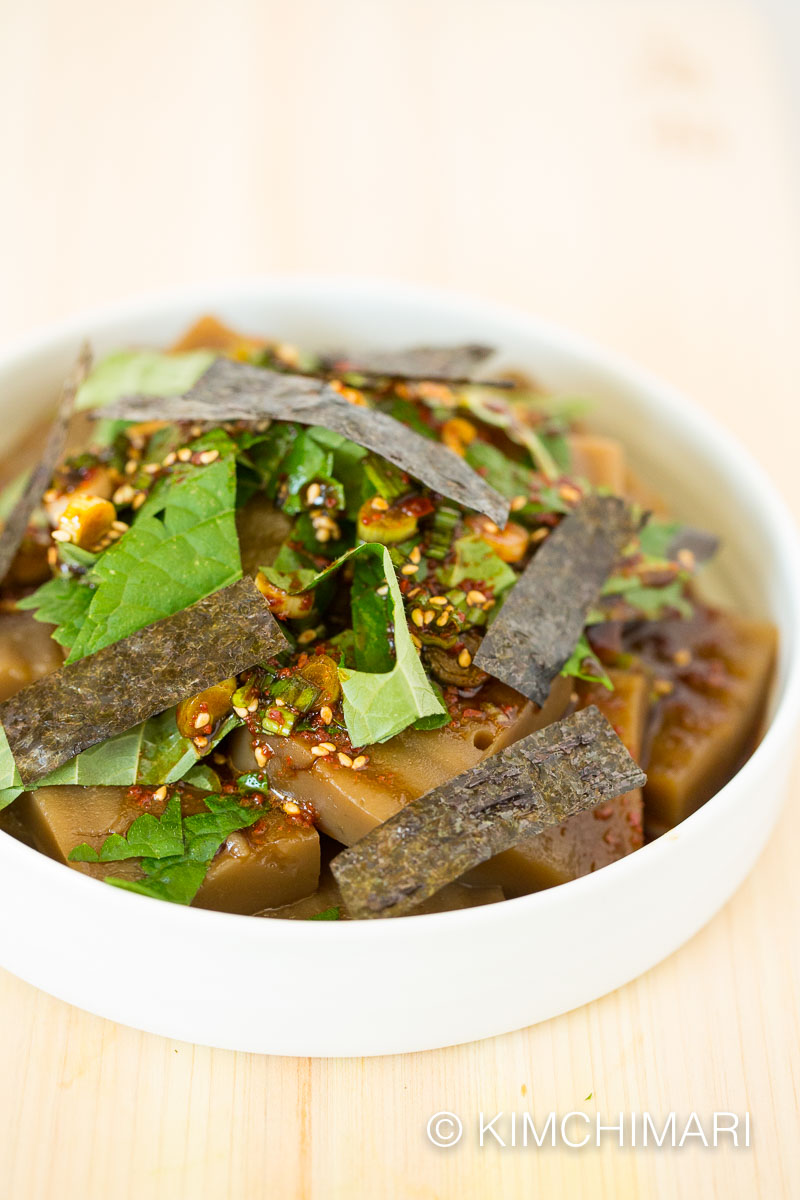
Finished Dotorimuk Acorn Jelly with Sauce
Step-by-Step Instructions
** If you can buy Dotorimuk for your local Korean store then you can just use that instead of making your own if you’d like.

- Measure acorn jelly (dotorimuk) powder in a bowl and add cold water. Mix well.
- Add salt and mix again.
- Transfer acorn mixture into a pot and turn on heat to medium. Stir occasionally the first 3-4 minutes to make sure it heats evenly. At about 4 min, you will see tiny bits of gelatin forming and the mixture starting to thicken. Stir now continuously for another 4 min (total 8-9 min) or so while it becomes thick and peaks are formed (much like whipped cream) and holds shape.
- Add oil and cook for another 1 minute. Keep stirring so oil is all mixed in. Oil is not a must but it makes it more smooth and soft tasting. Don’t stop right away after it forms peaks, make sure you cook 9-10 min in total or more to ensure it’s fully cooked. See video.
- Prepare a rectangular glass container or a baking pan (8″x 5″ x 2(H)”works for my basic 4 servings recipe).
- Transfer the cooked, hot dotorimuk mixture from the pot onto the container in 3. Jiggle the container a bit to evenly spread the mix. With a spatula smooth out the top as much as you can.
- Loosely cover the muk with wrap or parchment paper. Cool for 5 hrs or overnight until it’s firm and bounces back when touched. It should be firmer than jello. The longer you cool, the firmer it will get up to a certain point of course. If the temperature is warm where you are, you can also let it cool in the fridge but it’s better not to if you can.
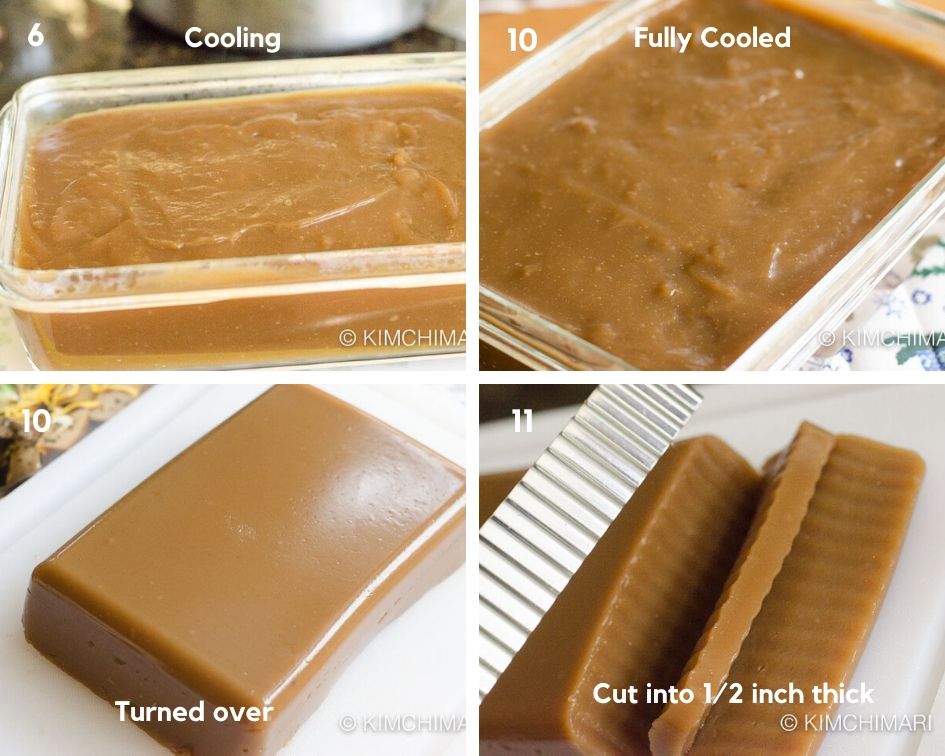
How to cool and cut Acorn Jelly - While it’s cooling, make Yangnyeomjang sauce.
- I share 2 recipes so choose one. Sauce 1 is more simple, less sweet, spicy and not tangy – more traditional flavors. Sauce 2 is more modern and stronger tasting, sweeter, spicier, garlicky and tangy. Sauce 2 works well if you add more fresh veggies like lettuce, perilla, chrysanthemum leaves and escarole. See recipe card and make them ahead of time.
- For Sauce 1 – In a bowl, add soy sauce, water or anchovy broth, Korean red chili pepper powder, sesame seeds, sugar, sesame oil, chopped green onions
- When the muk is firm, loosen it by tilting the container to one side, the opposite side should start to come away from the walls. When you have done this with all 4 sides, place a plate or cutting board on top and turn it over (like how you do with baked cakes when you want to get it out of the pan). And VOILA! You should have the muk on your cutting board now.
Cut muk into thick (1/2 inch) slices across and then again into smaller squares. Plate them and pour Yangnyeomjang sauce over them when you are ready to eat. I’ve made some different presentation variations so I hope you enjoy them and get ideas!
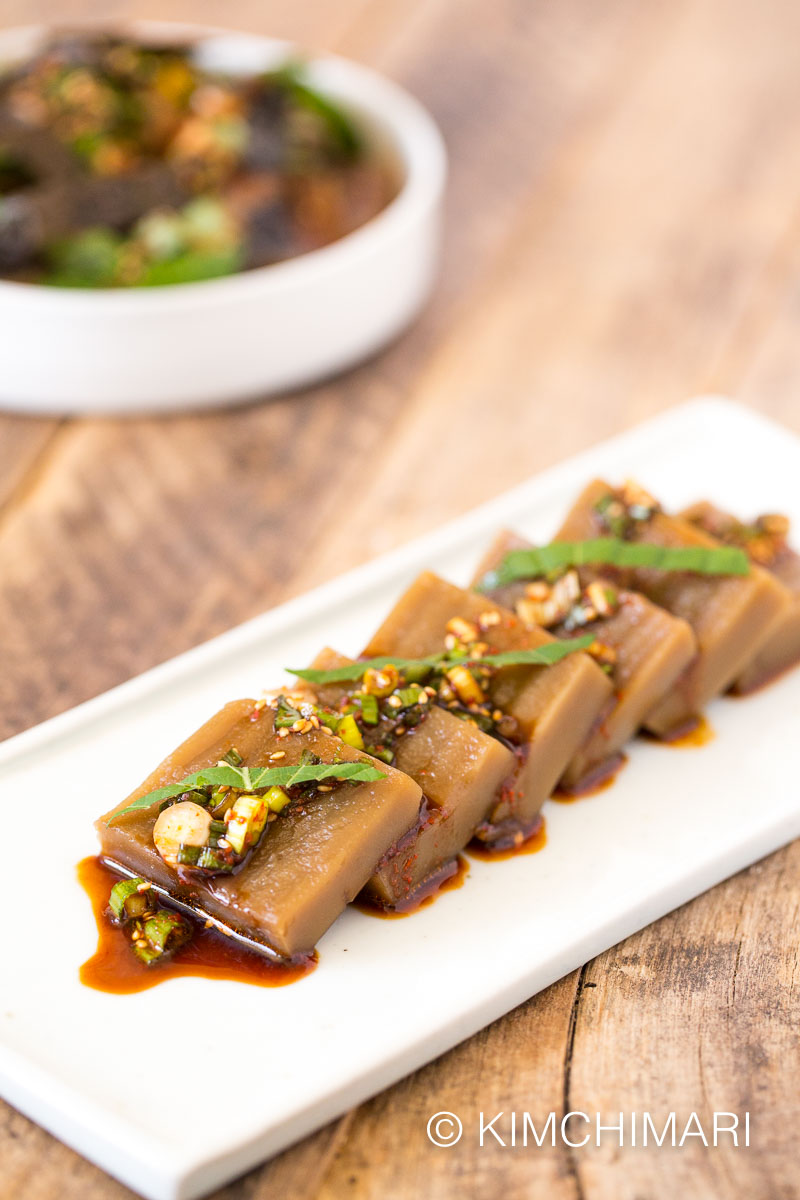
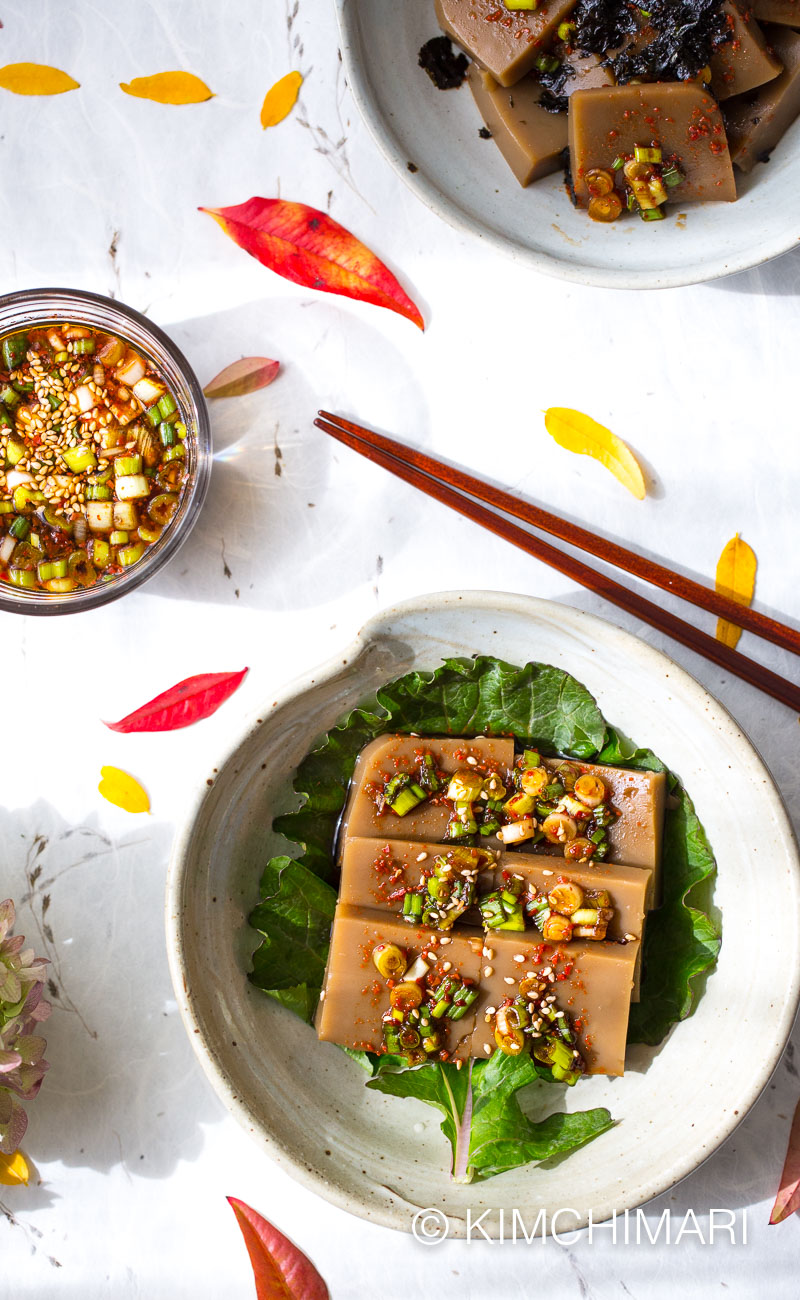
Serving suggestions
This picture shows Dotorimuk served with just Sauce 1 (bottom) and then topped also topped with roasted gim (top). You can also top with Perilla or Chrysanthemum leaves (ssukat) and other greens. See my variation notes.
Serve as a side dish to any Korean meal with rice. Great as an appetizer too when more veggies are added and made like a salad.
If you want to see how I make it – watch this video!
If you liked this recipe, please leave me a comment and ☆☆☆☆☆ rating below!
FOLLOW ME on INSTAGRAM or join my FACEBOOK GROUP to ask and share everything about Korean food with others just like you! ❤️
Take care ❤️
JinJoo
Acorn Jelly (Dotorimuk)
Ingredients
Acorn Jelly
- 100 g dried acorn powder (dotorimuk garu) (100% acorn flour should be gluten free - 100g is about 3/4 to 1 cup)
- 4.5 cup water
- 1 tsp sea salt
- 1 tsp vegetable oil
Sauce 1 (less sweet and classic)
- 3 Tbsp soy sauce (jin ganjang (sempio or kikkoman), for GF use GF soy sauce)
- 1 Tbsp water (or anchovy stock)
- 2 tsp korean red chili powder (gochukaru)
- 1/2 tsp sugar
- 2 tsp sesame seeds
- 1 tsp sesame oil
- 2 green onion (chopped)
Sauce 2 (sweeter, tangy and spicy) - great with more veggies
- 2 Tbsp soy sauce (jin ganjang (sempio or kikkoman))
- 1.5 Tbsp Korean red chili powder
- 1.5 tsp vinegar
- 1 Tbsp cooking sake (rice wine or mirin)
- 1.5 tsp sesame oil
- 0.75 tsp sugar
Instructions
Make Acorn Jelly
- Measure acorn jelly (dotorimuk) powder in a bowl and add cold water. Mix well.
- Add salt and mix again.
- Transfer acorn mixture into a pot and turn on heat to medium. Stir occasionally the first 3-4 minutes to make sure it heats evenly. At about 4 min, you will see tiny bits of gelatin forming and the mixture starting to thicken. Stir now continuously for another 4 min or so (total of 8 -9 min) while it becomes thick and peaks are formed (much like whipped cream) and holds shape.
- Add oil and cook for another 1 minute. Keep stirring so oil is all mixed in. Don't stop right away after it forms peaks, make sure you cook 9-10 min in total or more to ensure it's fully cooked. See video.
- Prepare a rectangular glass container or a baking pan (8"x 5" x 2(H)"works for my basic 4 servings recipe).
- Transfer the cooked, hot dotorimuk mixture from the pot onto the container in 3. Jiggle the container a bit to evenly spread the mix. With a spatula smooth out the top as much as you can.
- Loosely cover the muk with wrap or parchment paper. Cool for 5 hrs or overnight until it's firm and bounces back when touched. It should be firmer than jello. The longer you cool, the firmer it will get up to a certain point of course. If the temperature is warm where you are, you can also let it cool in the fridge but it's better not to if you can.
Make Yangnyeomjang (Sauce)
- While it's cooling, make Yangnyeomjang sauce. I share 2 recipes so choose one. Sauce 1 is more simple, less sweet, spicy and not tangy - more traditional flavors. Sauce 2 is more modern and stronger tasting, sweeter, spicier, garlicky and tangy. Sauce 2 works well if you add more fresh veggies like lettuce, perilla, chrysanthemum leaves and escarole. See recipe card and make them ahead.
- In a bowl, add soy sauce, water or anchovy broth, Korean red chili pepper powder, sesame seeds, sugar, sesame oil, chopped green onions.
Assemble
- When the acorn jelly is firm, loosen it by tilting the container to one side, the opposite side should start to come away from the walls. When you have done this with all 4 sides, place a plate or cutting board on top and turn it over (like how you do with baked cakes when you want to get it out of the pan). And VOILA! You should have the muk on your cutting board now.
- Cut muk into thick (1/2 inch) slices across and then again into smaller squares. Plate them and pour Yangnyeomjang sauce over them when you are ready to eat.
Tips & Notes:
- Acorn powder weight vs volume varies depending on the brand. 100g can be anywhere from 3/4 cup to 1 cup. So focus on the instructions on the package and experiment a bit.
- Check water: acorn powder ratio from the Dotorimuk powder package that you have. The ratio varies. Just from 3 different packages (actually one is homemade from my mother-in-law's friend), the ratio ranges from 6:1 to 4.5:1. So it may be a bit of test and see for some of you.
- When cooking, keep watch and keep stirring to avoid lumps and from the bottom burning. It will start to thicken suddenly so don't walk away!
- Cool completely until it's completely firm (4-5 hrs to overnight) - it should jiggle but firmer than jello. If room temp is too warm, it may be safer to cool in the fridge although it's not the best way.
- Store leftovers in fridge up to 4 days and can be eaten cold right out of the fridge!

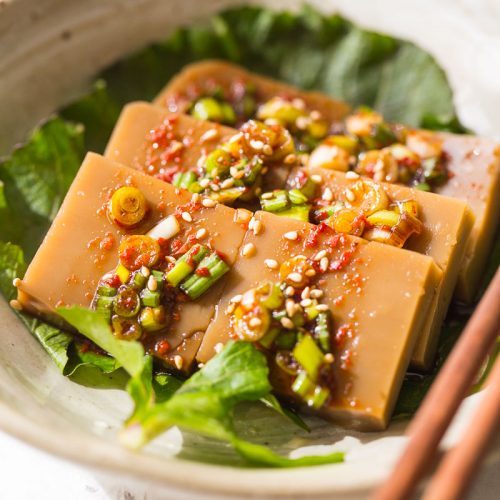
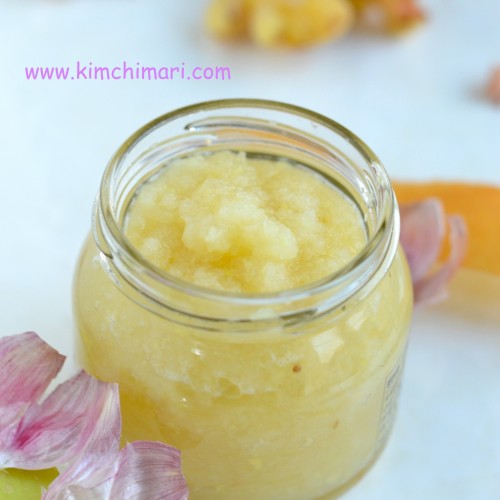
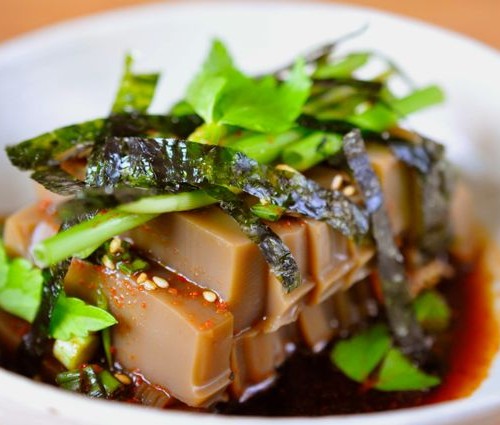
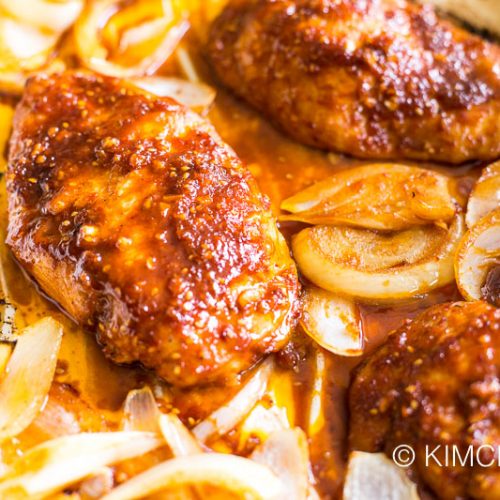

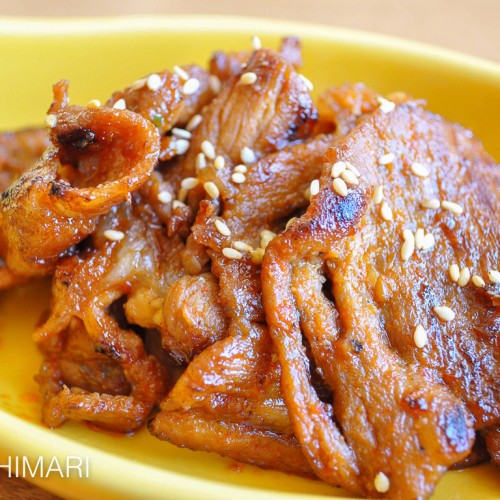
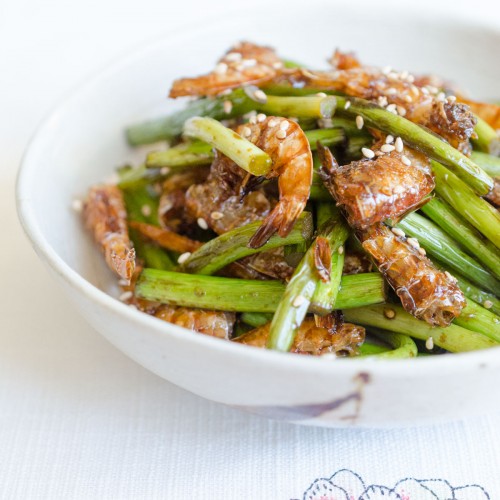
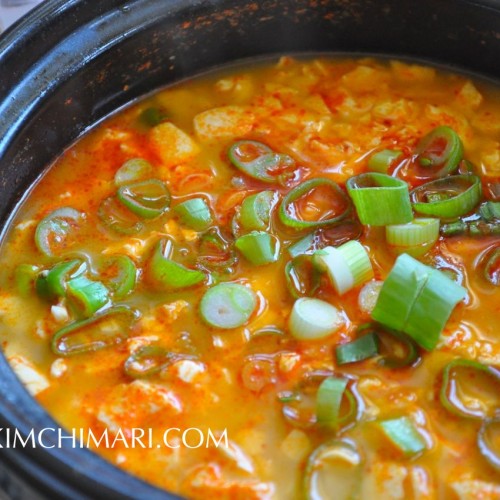


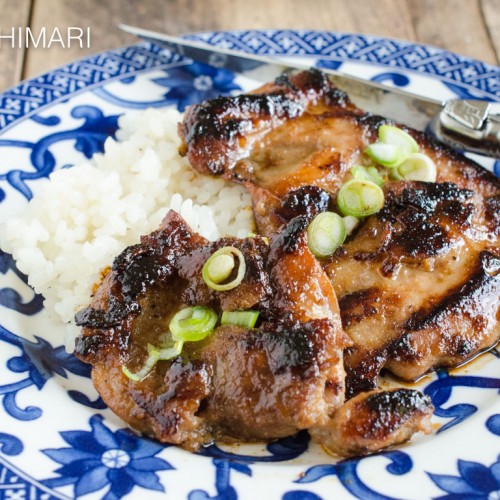

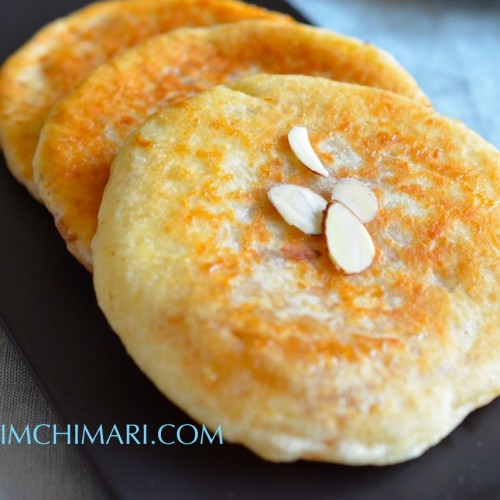






Your post is not only informative but also incredibly engaging. I learned a lot from it.
Thank you so much!!
Amazing recipe! I’ve been wanting to use more acorns in my diet because I have access to so many free acorn and they’re such sustainable and healthy food. I was not too sure how to use them though and was delighted to see this recipe! Thank you so much for sharing it!
Thank you so much!! Just fyi, you should find out how to make the acorn powder – acorns naturally have some toxins in them and you need to process them correctly to remove them before you make the jelly. Cheers!
Like Anphlo, I live near Oak Trees and am in awe of their productivity and generosity. And I, too, was delighted to see this recipe from half-way around the World. I have been emulating the processing techniques developed by Pacific Northwest Indigenous people over millennia.
I gather acorns in the Fall, culling any infested by the weevil, and then drying the sound acorns sufficiently for storage. For use, I crack and shell enough for my immediate purpose. I then run them through the Corona mill, producing a coarse meal. From this point, I put them in my half-gallon sprouting jar and, over the course of 3-4 days, leach most of the tannins by many changes of water. The water becomes clearer and clearer, and the tasted samples become less ans less astringent as the process proceeds. While the leached meal is still moist, I have been adding a small portion (~25% ) to my porridge.
With Jin Joo’s exciting recipe, I may dry the meal and then run it through the Corona mill again to produce the Acorn Powder.
Anphlo, let’s keep exploring the Dotorimuk-from-scratch recipe, with gratitude to the Oak Trees and to our Teacher, Jin Joo !
Wow! You have it down!! I’m so happy that you are going to make Dotorimuk with my recipe – don’t forget that the powder to water ratio varies so you may need to experiment a bit to find the correct ratio for your homemade powder. enjoy and thank you!
I’m a little confused. Your recipe states that 100 g of Dotori Mook powder equals 3/4 cup. But your video Shows that one cup equals 100 g. Which one is correct?
Hi Agape, Sorry for the confusion. As I mentioned in the notes, each package of Dotorimuk varies in weight and thus the water-to-powder ratio. I just tested 2 different powders I have and on one 3/4 cup is indeed 100g and on another one 1 cup is about 100g.. but I should have mentioned that and made the correction on them. So unfortunately you will have to rely on the package instructions and/or do a couple tries to see what ratio works for you. Thank you for asking!
My 3 yo has been obsessed with acorns. My cousin from S. Korea pointed us towards this dish. We had fun cooking with acorns but the taste buds of a 3 yo did not like it. We did make a sweet sauce. I thought the recipe was easy and straightforward. I’m glad we explored this dish. I thought it was good. Thank you!
Aww.. thank you! Yes, acorns does have a bit of a bitter after taste so small children probably won’t like it. But thank you soo much for the 5 stars and sharing the story with me. Love it.
would be nice if you gave measurement in cup size…. there are no instructions on the package in english. I have same package shown above.
I don’t see any pictures but of course, 100g acorn powder is about 3/4 cup. But as I noted in the notes, every powder has a different water:powder ratio ( 6:1 to 4.5:1 ) so I would recommend that you try it out and try to get the right thickness – you can watch video for that. BTW, if you join my Facebook Group – https://www.facebook.com/groups/kimchimari/, you can post pictures, ask questions about anything related to Korean food and cooking. I have about 16K members right now and it’s a great community that loves to help each other. Cheers!